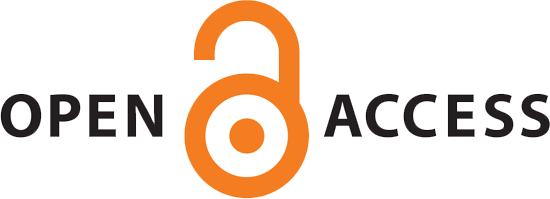Evaluating the Incidence, Risk Factors, and Diagnostic Limitations of Transient Neonatal Tyrosinemia in Iranian Newborns
Abstract
Objectives: Transient Neonatal Tyrosinemia (TNT) is a benign, self-limiting disorder characterized by elevated blood tyrosine levels in neonates. It is often caused by immature hepatic enzymes, particularly 4- ydroxyphenylpyruvate dioxygenase (4-HPPD), and may be influenced by factors such as prematurity, low birth weight, and high protein intake. Early detection via newborn screening is essential to differentiate TNT from more serious disorders such as tyrosinemia type I. The aim of this study is to determine the incidence of TNT and identify perinatal factors associated with its development in Iranian neonates.
Methods: This retrospective case-control study reviewed newborn screenings performed at the Growth and Development Research Center’s metabolic laboratory between March 2019 and February 2023. The control group comprised newborns with normal metabolic screening results during the study period.
Results: Metabolic screenings were conducted on 73,349 infants. The incidence of TNT was found to be 0.47%, corresponding to a total of 345 diagnosed cases. TNT infants had a lower gestational age (37.7 ± 1.4 weeks), lower birth weight ( 2.94±0.5kg), and a higher rate of cesarean deliveries (83.9%) compared to the control group (P < 0.05).
Logistic regression analysis showed significant associations between TNT and preterm birth (OR: 868.2, 95% CI: 168.9–4212.7, P < 0.001), cesarean delivery (OR: 3.5, 95% CI: 2.26–5.3, P < 0.001), and gestational age (OR: 0.17, 95% CI: 0.12–0.24, P < 0.001). No significant association was found with other parameters (P ≥ 0.05).
Conclusion: TNT incidence in Iranian newborns is associated with prematurity and cesarean delivery. Optimizing screening protocols and encouraging vaginal delivery when possible may reduce TNT rates.
2. Zea-Rey AV, Cruz-Camino H, Vazquez-Cantu DL, Gutiérrez-García VM, Santos-Guzmán J, Cantú-Reyna C. The Incidence of Transient Neonatal Tyrosinemia Within a Mexican Population. J Inborn Errors Metab Screen. 2017;5:2326409817744230. https://doi.org/10.1177/2326409817744230
3. Camargo Neto EC, Schulte J, Anele EV, Rubim R, Lewis E, De Mari J, et al. Transient neonatal tyrosinemia: a frequent abnormality. J Pediatr 1998;74(6):447-50. https://doi.org/10.2223/jped.461
4. Zaleski WA, Hill A. Tyrosinosis: a new variant. Can Med Assoc J. 1973;108(4):477 passim.
5. Nakamura K, Matsumoto S, Mitsubuchi H, Endo F. Diagnosis and treatment of hereditary tyrosinemia in Japan. Pediatr Int. 2015;57(1):37-40. https://doi.org/10.1111/ped.12550
6. Varughese B, Madrewar D, Polipalli SK, Kapoor S. Development of Flow Injection Analysis Method for the Second-Tier Estimation of Succinylacetone in Dried Blood Spot of Newborn Screening. Indian J Clin Biochem. 2022;37(1):40-50. https://doi.org/10.1007/s12291-020-00944-z
7. Screening for inborn errors of metabolism. Report of a WHO Scientific Group. World Health Organ Tech Rep Ser. 1968;401:1-57.
8. Ohisalo JJ, Laskowska-Klita T, Andersson SM. Development of tyrosine aminotransferase and para-hydroxyphenylpyruvate dioxygenase activities in fetal and neonatal human liver. J Clin Invest. 1982;70(1):198-200. https://doi.org/10.1172/jci110593
9. Menkes JH, Welcher DW, Levi HS, Dallas J, Gretsky NE. Relationship of elevated blood tyrosine to the ultimate intellectual performance of premature infants. Pediatrics. 1972;49(2):218-24. https://doi.org/10.1542/peds.49.2.218
10. Komrower GM, Robins AJ. Plasma amino acid disturbance in infancy. I: Hypermethioninaemia and transient tyrosinaemia. Arch Dis Child. 1969;44(235):418-21. https://doi.org/10.1136/adc.44.235.418
11. Light IJ, Sutherland JM, Berry HK. Clinical Significance of Tyrosinemia of Prematurity. Am J Dis Child. 1973;125(2):243-7. https://doi.org/10.1001/archpedi.1973.04160020067013
12. Mamunes P, Prince PE, Thornton NH, Hunt PA, Hitchcock ES. Intellectual deficits after transient tyrosinemia in the term neonate. Pediatrics. 1976;57(5):675-80. https://doi.org/10.1542/peds.57.5.675
13. Fernbach SA, Summons RE, Pereira WE, Duffield AM. Metabolic studies of transient tyrosinemia in premature infants. Pediatr Res. 1975;9(4):172-6. https://doi.org/10.1203/00006450-197504000-00006
14. Martin HP, Fischer HL, Martin DS, Chase HP. The development of children with transient neonatal tyrosinemia. J Pediatr. 1974;84(2):212-6. https://doi.org/10.1016/S0022-3476(74)80604-9
15. Techakittiroj C, Cunningham A, Hooper PF, Andersson HC, Thoene J. High protein diet mimics hypertyrosinemia in newborn infants. J Pediatr. 2005;146(2):281-2. https://doi.org/10.1016/j.jpeds.2004.10.013
16. Roura JC JE, Viera IC, Cuervo OH, De la Peña D, Nogueras L. Transitory neonatal tyrosinemia: biochemical diagnosis of one case. Revista Cubana de Genética Comunitaria. 2012;6(1):57-60.
17. Martin HP, Fischer HL, Martin DS, Chase HP. The development of children with transient neonatal tyrosinemia. J Pediatr. 1974;84(2):212-6. https://doi.org/10.1016/s0022-3476(74)80604-9
18. Avery ME, Clow CL, Menkes JH, Ramos A, Scriver CR, Stern L, et al. Transient tyrosinemia of the newborn: dietary and clinical aspects. Pediatrics. 1967;39(3):378-84.
19. Russo PA, Mitchell GA, Tanguay RM. Tyrosinemia: a review. Pediatr Dev Pathol. 2001;4(3):212-21. https://doi.org/10.1007/s100240010146
20. Pourshirazi M, Heidarzadeh M, Taheri M, Esmaily H, Babaey F, Talkhi N, et al. Cesarean delivery in Iran: a population-based analysis using the Robson classification system. BMC Pregnancy Childbirth. 2022;22(1):185. https://doi.org/10.1186/s12884-022-04517-1
21. Menkes JH, Chernick V, Ringel B. Effect of elevated blood tyrosine on subsequent intellectual development of premature infants. J Pediatr. 1966;69(4):583-8. https://doi.org/https://doi.org/10.1016/S0022-3476(66)80044-6
| Files | ||
| Issue | Vol 3 No 2 (2025) | |
| Section | Original Articles | |
| DOI | https://doi.org/10.18502/abi.v3i2.19487 | |
| Keywords | ||
| Transient Neonatal Tyrosinemia Neonatal Screening Newborn Cesarean Section Premature Birth Iran | ||
| Rights and permissions | |

|
This work is licensed under a Creative Commons Attribution-NonCommercial 4.0 International License. |



